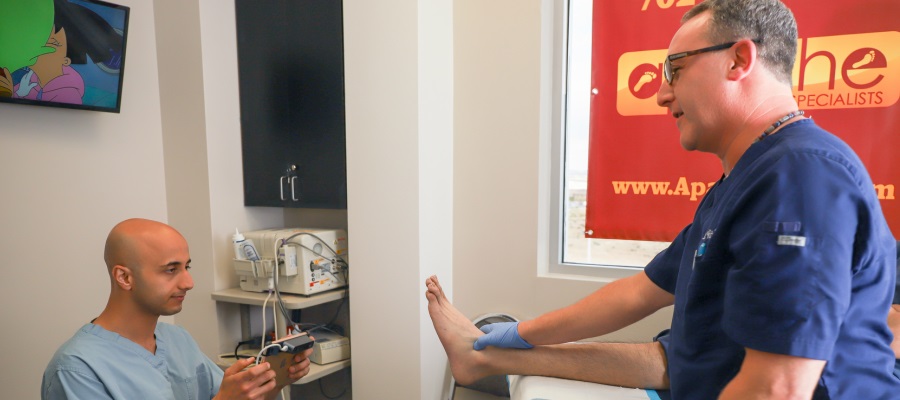
Diabetic Foot Calluses: Protective or Problematic?
Calluses protect the body because, without that layer of thickened skin, pressure or friction could cause an open wound. However, in patients with peripheral neuropathy and diabetes, calluses may be covering up a much deeper wound or ulceration. Callus refers to nonviable, hyperkeratotic tissue, and is common to diabetic foot ulcers. The presence of callus can prevent healing and can also create increased pressure from footwear or improper gait in the neuropathic diabetic foot. When neglected and allowed to accumulate, callus can cause pressure necrosis and ulceration of the underlying tissues….
Diabetic foot ulcers often lead to amputation. In the United States, approximately 60% of all lower extremity amputations occur among persons with diabetes and of these, approximately 85% are preceded by a foot ulcer1. A study published by Sage et al. in 2001 demonstrated the link between calluses and ulcers by reporting that callus formation precedes ulcer formation in over 82% of patients with diabetic foot ulcers2.
Since calluses can hide a developing ulcer, it is vital that they be managed appropriately. Patients who develop calluses on pressure points need regular treatment and careful follow-up if ulceration is to be prevented. Ideally, calluses should only be removed by podiatrists in las vegas who have been trained in the appropriate techniques. It is recommended that this procedure be repeated regularly. Patients should also be taught the danger signs that a callus is becoming pre-ulcerative such as speckles of blood within the callus which indicate an ulcer could be developing.
Diabetic Calluses Prevention, Treatment and Removal
A further reason why callus removal is important is that a callus may hide or worsen inflammation underneath the skin, an early sign of a diabetic foot ulcer. Nishide et al. conducted a study in 2009 to identify latent inflammation within the foot callus using thermography and ultrasonography, and to investigate the relationship between the inflammation in callus and presence or absence of diabetes. The researchers found that even though there were more calluses identified in the non-diabetic group, they had no signs of inflammation under the calluses. On the other hand, 10% of the calluses in the diabetic patient group had notable inflammation. They concluded that physiological imaging techniques may be valuable screening tools for the potential risk of diabetic foot ulcers.
What the Nishide et al. study demonstrated is that a problematic ulcer is very hard to detect, even by the most experienced wound care specialists. Indiscriminate callus removal can cause many problems of its own. If the removal of the callus goes too deep or non-sterile techniques are used, infection can follow. These infections heal very poorly in diabetic patients and if not healed, can lead to lower extremity amputations. However, the benefits of callus removal seem to outweigh the risk in nearly every case. It is also very important not to traumatize the diabetic foot and under-operating should be the rule.
Currently, the best approach is prevention through the use of proper footwear and orthotics to reduce friction. Screening may be drawing near that will distinguish which calluses need surgical removal and help to resolve the questions in this troublesome area of diabetic foot care.
